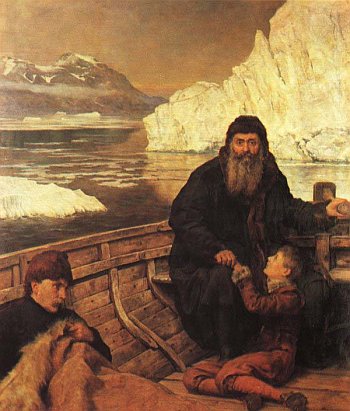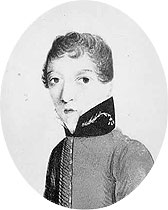Henry Welby, an eccentric character, confined himself in an obscure house in London, where he remained unseen by any one until his death, a period of 44 years. He died in 1636.
— Bizarre Notes & Queries, April 1886
Henry Welby, an eccentric character, confined himself in an obscure house in London, where he remained unseen by any one until his death, a period of 44 years. He died in 1636.
— Bizarre Notes & Queries, April 1886
Browsing in a Paris bookshop in the 1920s, the novelist Anne Parrish came upon an old copy of Jack Frost and Other Stories, a favorite from her childhood in Colorado. When she showed it to her husband, he found it was her own copy, inscribed with her name and address.
George Bernard Shaw once came across one of his own books in a used bookstore in London. He was surprised to find his own inscription inside — he had presented the book “with esteem” to a friend. He immediately bought the book and had it wrapped and delivered again, after adding a second inscription: “With renewed esteem, George Bernard Shaw.”

No one knows how Henry Hudson died.
A mutinous crew set the explorer adrift in Hudson Bay in 1611, and he was never seen again.
“It is amazing how complete is the delusion that beauty is goodness.” — Tolstoy
“Some actions are called malicious because they’re done by ugly people.” — Georg Christoph Lichtenberg
Quite recently in China fifteen wooden idols were tried and condemned to decapitation for having caused the death of a man of high military rank. On complaint of the family of the deceased the viceroy residing at Fouchow ordered the culprits to be taken out of the temple and brought before the criminal court of that city, which after due process of law sentenced them to have their heads severed from their bodies and then to be thrown into a pond. The execution is reported to have taken place in the presence of a large concourse of approving spectators and ‘amid the loud execrations of the masses,’ who seem in their excitement to have ‘lost their heads’ as well as the hapless deities.
— E.P. Evans, The Criminal Prosecution and Capital Punishment of Animals, 1906
Newly arrived in Fresno, Calif., in 1906, Baldasare Forestiere found the soil would not support an orchard like his father’s in Sicily — there was a layer of hardpan below the surface. But after two years digging tunnels as a laborer in Boston and New York, he had become handy with a pick and shovel, and he soon dug out a skylighted room 10 feet underground, in which an orange tree flourished.
So he kept digging. In time, he added a kitchen, a pantry, a living room, a reading room, two bedrooms, and a tree-filled courtyard that included a bathtub that he could fill with water warmed by the sun.
Forty years later, Forestiere had built a multi-level underground complex that covered 10 acres and included 100 rooms and passageways, including a chapel, a hothouse, a winery, and a “fish-viewing room” whose glass-covered skylight opened onto the bottom of a pond. He estimated the whole thing cost only $300. When he died in 1946, he was adding a 3,500-square-foot ballroom.

Given any pair of potatoes — even bizarre, Richard Nixon-shaped potatoes — it’s always possible to draw a loop on each so that the two loops are identical in three dimensions.
Do you see the simple, intuitive proof for this?
5 is one number.
2 and 3 are 5.
Therefore 2 and 3 are one number.
Some children at play in a new-mown field, near Kensington gardens, horrid to relate, found the head of a female, with the skull split, the back part of it broken entirely off, and the nose cut away close to the face; the eyes were scooped out, and an iron spike was driven straight up the head through where the neck was amputated. To add to the horror of this occurrence, the head being extremely small, the children brought it, as a matter of curiosity, to show their parents. With a view to the discovery of the perpetrators of this deed, the circumstances were withheld from the neighbours for a time, when, in a lane adjoining the same field, the headless trunk was found extremely mutilated, the arms and thighs having been cut off close to the body. The limbs could not be traced. A hue-and-cry was now raised throughout the vicinity, where horror only kept pace with anxiety for a full investigation of all the circumstances. The result proved to be that some person, not having the fear of mischief before his eyes, had thus treated — a wooden doll!
— William Oxberry, ed., The Flowers of Literature, 1822

James Barry cut an impressive figure as a British military surgeon, working tirelessly to improve conditions for wounded soldiers around the globe. He worked with Florence Nightingale, performed the first successful cesarean section in Africa, and rose to the rank of inspector general of British military hospitals.
So when he died on July 25, 1865, the attendants were surprised to find he was a woman.
No one knows who she was, where she came from, or what led her to a career in military medicine. She’s buried in London under the alias she lived by.
See also Charley Parkhurst.